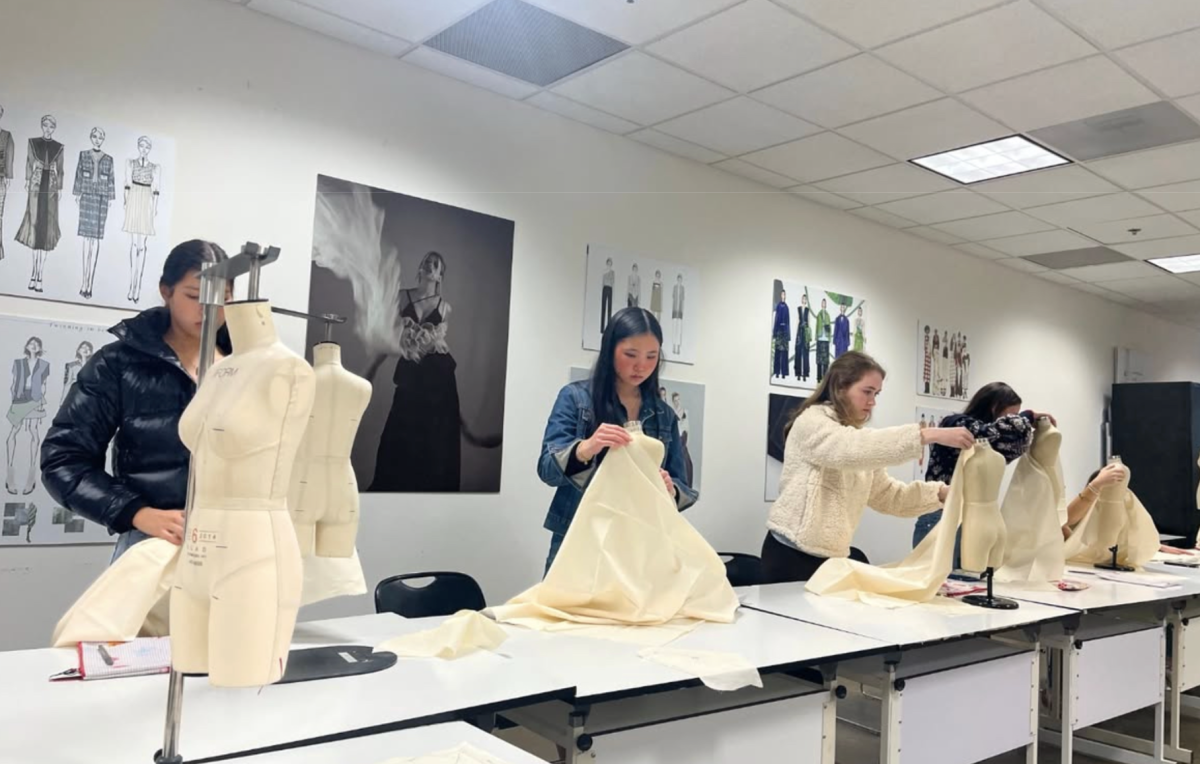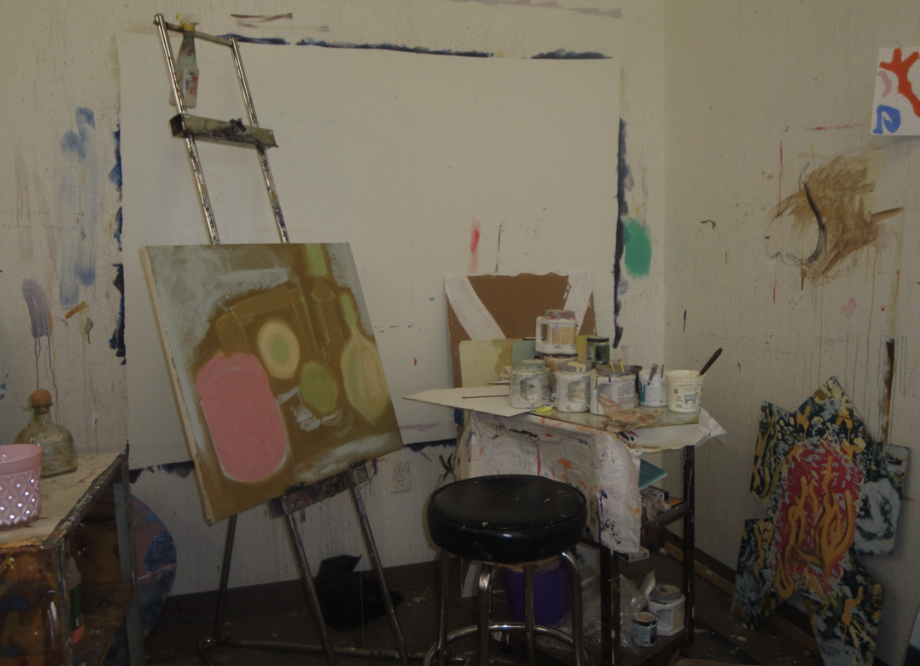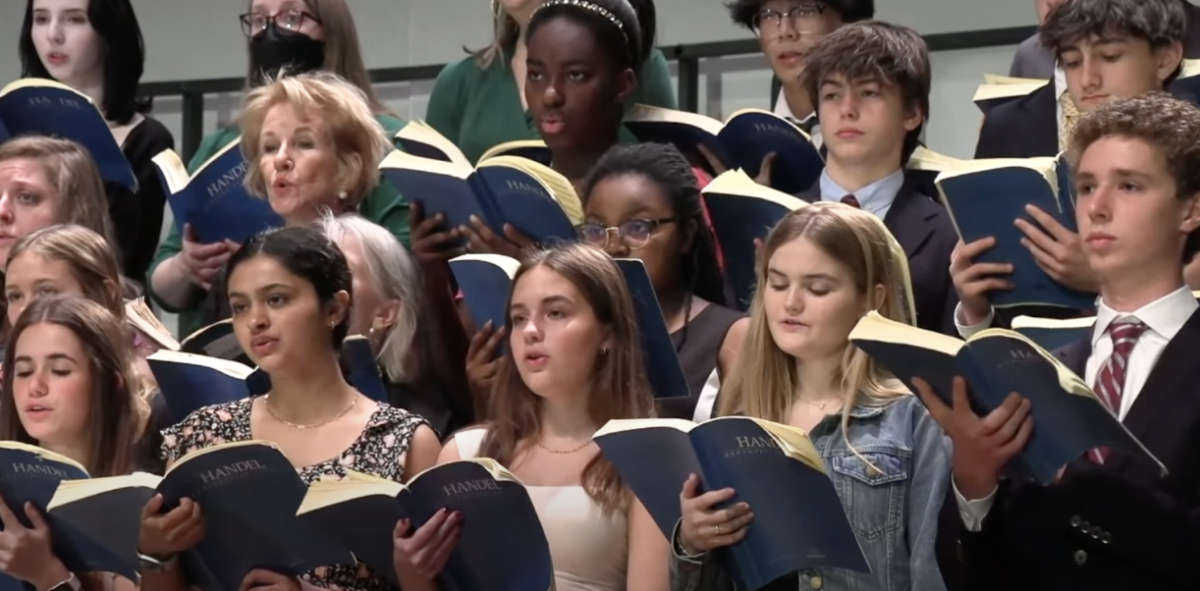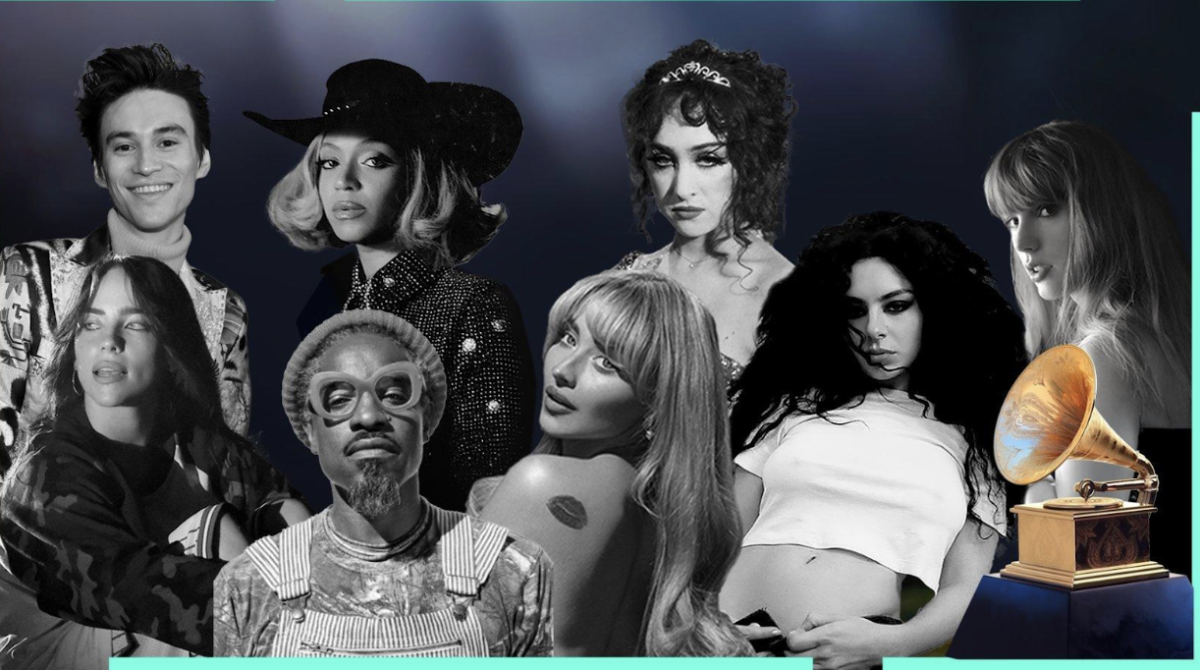Cold, alabaster clouds hung low over midtown on Jan. 22, as people streamed through the doors of the High Museum. Families, friends, and teachers strolled into the reception hall of the museum, greeting each other and admiring the pieces of art around them. As glasses clinked and low conversation diffused through the gallery, the crowd moved deeper into the exhibit, revealing a menagerie of artwork by students from various schools across the city. From portraits to collages, the walls were covered with different colors, textures, and shapes. The guests, in stark contrast to the cold world outside, stood close and warm, gazing at the artwork on the walls. The reception had begun.
Leading up to the event, Westminster, along with Lovett and Galloway, was asked by the High Museum to select students’ artwork to showcase their abilities and the value of arts programs in schools.
“The Westminster Schools, The Lovett School, and The Galloway School are part of an exciting academic affiliate program at the High,” read a sign at the entrance of the exhibit. “The schools and the Museum both understand the importance of high-quality art classes and the power of integrating the study of art into all subjects.”
“To get a better overview of the entire school,” said junior Tripp H’Doubler, “[the event organizers] asked each teacher to pick two or three of the best pieces from [his or her] classes.”
Thus, Westminster’s contribution was made up of many different pieces across all grades, from kindergarten to twelfth grade. One result of the diversity in the exhibition was that previously unknown artists were inspired by this newfound chance for recognition.
“I am very pleased my piece is showing [in the High],” said H’Doubler. “I never considered myself that much of an artist, but I heard about the opportunity to [be featured] in a museum and I [was] inspired.”
For those who consider themselves lifelong artists, the experience at the High was new and even somewhat surprising.
“I have always liked art, but this is definitely something new for me,” said sophomore Ellie Hogan. “I never would have thought that I would be given this opportunity and that [one of my] pieces would be shown at the High!”
For their artwork to be displayed in the exhibit, the artists underwent long and involved preparations, using a variety of methods and media to craft their finished product.
“In class, we took a number of chairs and stools and stacked and leaned them in an abstract way,” said Hogan. “Then, really focusing on the contrasts, we drew out the chairs and tables onto this brown, cardboard-esque paper that [wouldn’t] seem like it would be used for a final piece. Then to add a little twist, we added one color to the piece. I chose turquoise. The turquoise really stands out against the brown paper and the graphite. I really focused on the chairs because something that seems so simple turned out to have more details than you can imagine. We used white charcoal to show the highlights and reflections off the chairs, giving it a more three-dimensional look.”
Students spent many hours preparing their artwork.
“I spent a long time on my painting,” said H’Doubler. “I probably put 20 hours into this project.”
After lengthy periods of preparation and creation, the artists were finally ready to unveil their pieces to the masses. On the day of the exhibit, after having been chosen by their teachers for the display, the student artists stood beside their works and presented them to the onlookers.
As the reception continued, guests filtered through the gallery, viewing, pondering, and remarking. After a time, the refreshments began to dwindle, and the viewers congratulated the artists. The art remained, though. Until early February, the student artwork will stay on the walls, open to all who wish to view it.
“Even when we’re not there,” said H’Doubler, “our art will be able to speak for us to anyone who comes to see it.”




